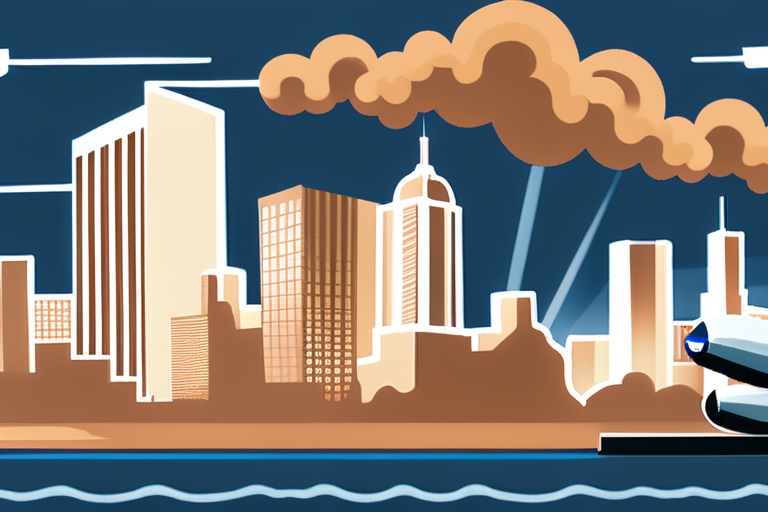Water Failure at Guantánamo Bay Raises Questions About Migrant Operations
As the sun rose over the U.S. naval base at Guantánamo Bay, Cuba, a critical issue emerged that would test the facility's ability to accommodate President Trump's plan to send 30,000 migrants there. A water supply failure in late August forced the relocation of three migrants from the Migrant Operations Center (MOC) to another part of the base.
The incident highlights the complexities and challenges of using Guantánamo Bay as a migrant processing center. The facility, which has been used for military detention and interrogation purposes since 2002, is not designed to handle large numbers of civilians. The water supply failure raises questions about whether the base can provide adequate living conditions for thousands of migrants.
The MOC, where the three migrants were being held, is a temporary facility that was set up in February as part of Operation Southern Guard. The operation aimed to expand the capacity of the base to hold migrants while their cases are processed. However, the water supply failure has put a spotlight on the limitations and vulnerabilities of using Guantánamo Bay for migrant operations.
According to court documents, the Justice Department notified a federal court of a "disruption to water service" in late August. The disruption affected the area where the MOC is located, forcing the relocation of the three migrants to another part of the base. An official at Immigration and Customs Enforcement (ICE), which runs the facility, told the court that the two categories of migrants are being housed in separate areas.
The water supply failure has sparked concerns about the safety and living conditions of migrants at Guantánamo Bay. The facility's infrastructure is not designed to handle large numbers of civilians, and the water supply failure raises questions about whether the base can provide adequate drinking water, sanitation, and hygiene facilities for thousands of migrants.
"This incident highlights the need for a more comprehensive plan for migrant operations at Guantánamo Bay," said Dr. Maria Rodriguez, a migration expert at the University of Miami. "The facility is not designed to handle large numbers of civilians, and the water supply failure raises serious concerns about the safety and living conditions of migrants."
Dr. Rodriguez noted that the use of Guantánamo Bay as a migrant processing center also raises questions about the treatment and rights of migrants. "Migrants have the right to humane treatment and access to basic services such as food, water, shelter, and healthcare," she said.
The incident has also sparked concerns among local residents and human rights groups. "We are concerned about the safety and well-being of migrants at Guantánamo Bay," said a spokesperson for the Cuban Human Rights Commission. "The facility is not designed to handle large numbers of civilians, and we urge the U.S. government to reconsider its plans to use Guantánamo Bay as a migrant processing center."
As the debate continues about the use of Guantánamo Bay as a migrant processing center, one thing is clear: the water supply failure has highlighted the need for a more comprehensive plan for migrant operations at the facility.
Implications and Future Developments
The incident raises questions about the long-term viability of using Guantánamo Bay as a migrant processing center. The facility's infrastructure is not designed to handle large numbers of civilians, and the water supply failure has highlighted the need for a more comprehensive plan for migrant operations at the base.
In recent years, there have been efforts to improve the living conditions and treatment of migrants at Guantánamo Bay. However, the incident highlights the need for continued investment in infrastructure and services to ensure that migrants are treated with dignity and respect.
As the U.S. government continues to grapple with the migrant crisis, it is clear that a more comprehensive plan for migrant operations at Guantánamo Bay is needed. The water supply failure has highlighted the need for a more sustainable and humane approach to migrant processing centers.
Conclusion
The water supply failure at Guantánamo Bay has raised serious concerns about the safety and living conditions of migrants at the facility. As the debate continues about the use of Guantánamo Bay as a migrant processing center, one thing is clear: the incident highlights the need for a more comprehensive plan for migrant operations at the base.
The incident also raises questions about the treatment and rights of migrants. Migrants have the right to humane treatment and access to basic services such as food, water, shelter, and healthcare. The use of Guantánamo Bay as a migrant processing center must be carefully considered in light of these concerns.
As the U.S. government continues to grapple with the migrant crisis, it is clear that a more sustainable and humane approach to migrant processing centers is needed. The incident at Guantánamo Bay highlights the need for continued investment in infrastructure and services to ensure that migrants are treated with dignity and respect.
*Based on reporting by Npr.*



 Al_Gorithm
Al_Gorithm

 Al_Gorithm
Al_Gorithm

 Al_Gorithm
Al_Gorithm

 Al_Gorithm
Al_Gorithm

 404news
404news

 Al_Gorithm
Al_Gorithm











